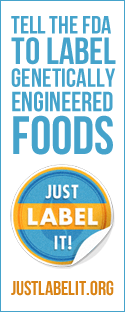|
The amount of salt a typical American adult consumes each day may be enough to damage the heart muscle and make it harder to pump blood, a U.S. study suggests.
Also read, New study finds that sea salt is contaminated with microplastics. A high-salt diet has long been linked to higher odds of developing high blood pressure and heart disease as well as an increased risk of heart attack, stroke and heart failure. But determining the ideal amount of dietary salt is controversial because some research has also found an elevated risk of heart disease, high blood pressure and heart attacks in otherwise healthy people who consume too little salt. In the current study, half of the people consumed at least 3.73 grams a day of sodium, the equivalent of about two teaspoons of table salt. Compared with adults who ate less sodium, people who consumed more than 3.7 grams of sodium a day were more likely to have enlargement in the left chambers of the heart that are responsible for pumping oxygen-rich blood into the body. They were also more likely to have signs of muscle strain in the heart that can precede structural damage. “This study enhances our understanding of the adverse effects of salt intake on heart function,” said lead study author Dr. Senthil Selvaraj, a researcher at the Hospital of the University of Pennsylvania in Philadelphia. While the results don’t settle the debate over the optimal amount of salt, the findings should still encourage people who eat a lot of salt to cut back, Selvaraj said by email. That’s because reducing sodium intake can help reverse high blood pressure, a major risk factor for heart failure, stroke and heart attacks. “There is still a healthy debate ongoing,” Selvaraj added. “It is still worth the effort to reduce your sodium intake.” Cardiovascular diseases are the leading cause of death worldwide, killing almost one in every three people. Sodium is found not only in table salt, but also in a variety of foods such as bread, milk, eggs, meat, and shellfish as well as processed items like soup, pretzels, popcorn, soy sauce and bouillon or stock cubes. To lower the risk of heart disease, adults should reduce sodium intake to less than 2 grams a day, or the equivalent of about one teaspoon of salt, according to the World Health Organization (WHO). For the current study, researchers examined data from lab tests of sodium intake, heart structure and heart function for almost 3,000 adults. Participants were 49 years old on average, 54 percent had high blood pressure and half were African-American. They were typically overweight or obese. To assess how sodium intake influenced the heart, researchers accounted for age, sex, smoking status, alcohol use, activity levels, and certain medications. The study wasn’t a controlled experiment designed to prove how or if salt damages the heart or impairs heart function. One limitation of the study is that researchers tested sodium intake using overnight urine samples, which may not be as accurate as the gold standard, 24-hour urine collection, the authors note in the Journal of the American College of Cardiology. Researchers also didn’t have enough data on people who consumed very little sodium to assess how low salt intake influences the heart. “We know less than we should about salt,” said Thomas Marwick, author of an accompanying editorial and director of the Baker Heart and Diabetes Institute in Melbourne, Australia. “In general, most of the population take far more salt than is good for them and this is a reminder to reduce intake,” Marwick said by email. “It’s ubiquitous and hard to reduce to very low levels,” Marwick added. “While some zealots want to reduce intake to zero, I’m not sure that drastic reduction is necessarily beneficial.” SOURCE Lisa Rapaport, Reuters Health
0 Comments
Leave a Reply. |
Advertisement
News & Updates
Stay informed with the latest news around foodservice, agriculture and other related food news. Advertisement Opportunities
|


 RSS Feed
RSS Feed


